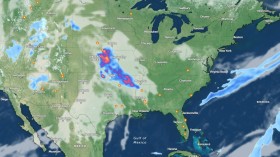According to NOAA, the rising sea levels will continue, and by 2100, experts predict that septic waste will seep into coastal homes and contaminate the drinking water.
The soil around the homes must be dry for the wastewater to filter out and flow into the sea in coastal communities, which frequently have their own individual septic tanks to treat sewage.
According to Phys.org, there are about a million of these personal septic systems in North Carolina alone.
Due to warmer air and ocean temperatures, Antarctic and Arctic glaciers and sea ice are melting. It then follows that the sea level will rise. This is the anticipated effect of climate change.
1 Floor Higher by 2100
The US coastline's sea level is expected to rise between 3.5 and 7 feet by 2100 and between 10 and 12 inches in the next 30 years, based on the information from NOAA or National Oceanic and Atmospheric Administration.
The soil in coastal areas will become saturated as a result, causing floods and storm surges to occur more frequently and further inland.
Marc F. P. Bierkens, a professor of hydrology from Utrecht University in the Netherlands, said that Groundwater levels will rise in response to sea level rise. Furthermore, there will likely be times of the year when groundwater levels are close to the surface as a result of the sea level rising and more intense rainfall events.
Detrimental Septic Waste Leakage
The soil becoming more saturated may cause septic tanks to leak.
Bierkens said that septic tanks may in fact flood as a result of this. In addition to the septic tank ceasing to function, groundwater that has come into contact with sewage from the septic tank may end up in the homes of people, backyards, or on the street if groundwater levels reach the surface.
This increases the possibility that people will come into contact with immensely contaminated water, which could cause illnesses like diarrhea and, in the worst-case scenario, but much less likely scenario, dysentery, and cholera.
Previous studies show that raw sewage contains a huge number of human pathogens. Based on the data from the Indiana Department of Health, exposure to these pathogens can cause a variety of illnesses, including typhoid, leptospirosis, E Coli, stomach flu, campylobacteriosis, cryptosporidiosis, and even campylobacteriosis.
Coastal communities are advised by experts to be mindful of the potential risks and take the necessary precautions.
Read also: Oil and Gas Extraction are Producing Historic Amount of Wastewater in Texas
Safe Drinking Water
Niko Wanders, an assistant professor of hydrology at Utrecht University, said that making sure sewer systems are not leaking and do not harm groundwater is the most crucial thing to do.
Wanders advises people to also get their drinking water from sources that are of high quality and where there is little chance of contamination because they are either very far from sources of pollution, under close observation, or where potential sewage leaks would take a very long time to eventually reach the well.
Wanders added that given enough time, the soil could clean the water so that pathogens would be more likely to perish. For instance, before being used, river water in the Netherlands must be infiltrated in dune areas for at least 120 days.
Wanders added that it is safe to use river water, even though it is not the highest quality source of drinking water because the sand and the treatment applied after abstraction help ensure that all dangerous pathogens and chemicals are eliminated.
Costly Solution, Unlivable Coastal Communities
Bierkens said that installing a system of temporary on-demand drainage pumps around the septic tank that activates when groundwater levels get too high is an option that could be a costly solution. Installing a centralized sewer system that connects to a water-purification plant is the final option, but it is also a very expensive one for the community.
The predicted global rise in sea levels will also have several other negative effects on coastal communities, such as increased storm damage and groundwater salinization.
Bierkens said that Communities near the coast with a flat topography are where this is most likely to happen. It is well known that higher sodium levels in drinking water are linked to high blood pressure and an increased risk of heart failure, Newsweek reports.
Related article: Poo Power: This Danish City is First to Tap Sewage Energy to Pump Drinking Water
© 2024 NatureWorldNews.com All rights reserved. Do not reproduce without permission.


![Roundworms with Short Memories 'Stop Forgetting' When Frozen or Given Lithium [Study]](https://1471793142.rsc.cdn77.org/data/thumbs/full/70295/280/157/50/40/roundworms-with-short-memories-stop-forgetting-when-frozen-or-given-lithium-study.jpg)


